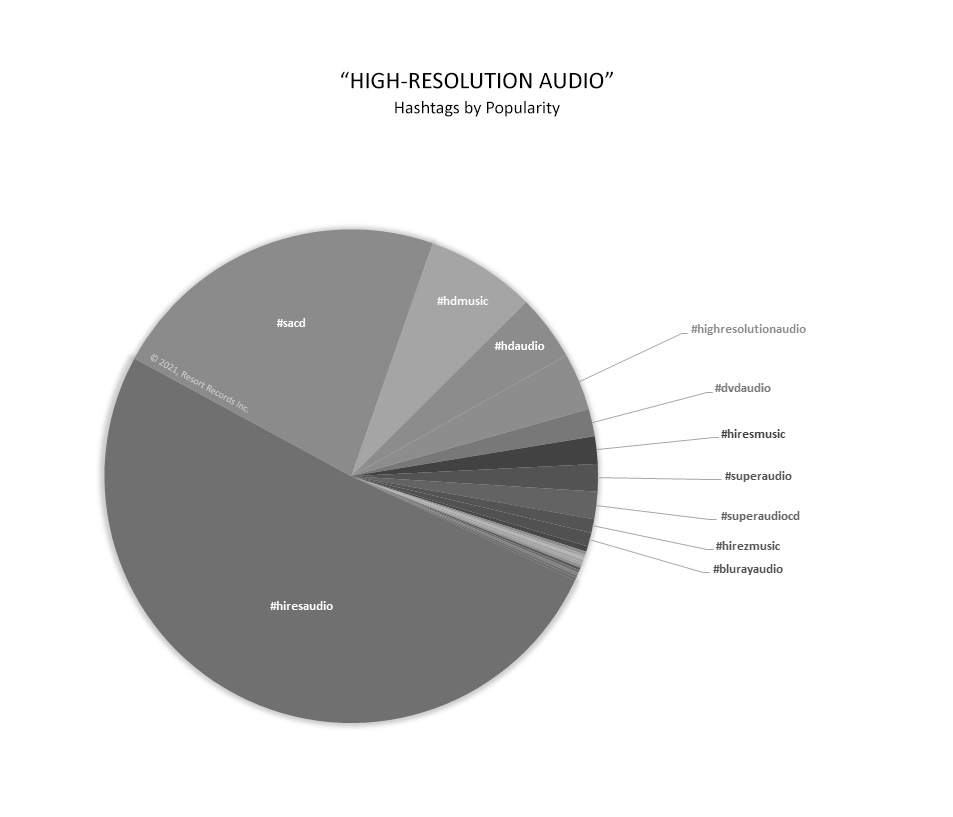Let’s talk about high-resolution audio for a moment – that is, digital audio encoded at greater than 16 bits and 44.1 kHz. Or, is it “high-definition audio?” “High-bitrate audio?” Cripes, it’s no wonder ‘high-resobitdef’ audio hasn’t gained traction with consumers: Nobody knows what to call it!
If you follow the subject of high-resolution audio closely or have products to market, you know how frustrating this can be. It’s another VHS / Betamax battle, but with even more conflicting terms, trademarks, and patents. For example, in little more than a year, “Pono,” “MQA,” and “High-Fidelity Pure Audio” have flared up and burned out.
Our industry isn’t helping. In 2004, Intel released its “HD Audio” computer hardware specification which, to this day, confuses the definition of that term. In fact, an Internet search of “HD Audio” now returns “Intel HD Audio” in the top spot. In 2019, Amazon launched “Amazon Music HD,” a streaming service that serves CD-quality music (and higher, if you pay more). In other words, CD-quality is now “high-definition,” according to the largest online retailer in the world. Ugh. We might as well retire “HD” from the high-resolution audio discussion forever. Adios.
In 2014, the Japan Audio Society proposed a formal “hi-res audio” specification, complete with governance and official trademark. To their credit, the spec includes analog processes that support frequencies of 40 kHz and above, but some will find this confusing, given the prevailing definition of high-resolution audio that relates specifically to digital bitrates and bit depths. Regardless, until there is broad adoption, the JAS’ official definition will go more-or-less unnoticed outside of Japan.
One Hashtag to Rule Them All
So, if we’re going to identify this topic with one universal and unmistakable word,“high-resolution audio” is looking somewhat favorable – okay, three words – but before we snap to judgement and retire “HD” from our audio glossaries forever, let’s check with Mr. Popular F. Opinion. After all, if everyone who’s anyone is dropping “HD” in their tweets, we’re fighting the tide.
I pumped every relevant term and hashtag I could think of into my favorite marketing research tools (e.g., Google Trends, Hashtagify.me). And those hashtags (highlighted in red) found to be ambiguous – for example, HRA more commonly refers to “human rights act” – were deemed impractical and removed from the results, with the important exception of #sacd, which produced 70% relevant hits (and considerable popularity, which we’ll discuss later).
Here’s the “audio” contenders:
#highresolutionaudio, #highdefinitionaudio, #highbitrateaudio, #highdefaudio, #highresaudio, #highrezaudio, #hidefaudio, #hiresaudio, #hirezaudio, #hdaudio, #hraudio, #hda, #hra
Here’s the “music” contenders:
#highresolutionmusic, #highdefinitionmusic, #highbitratemusic, #highdefmusic, #highresmusic, #highrezmusic, #hidefmusic, #hiresmusic, #hirezmusic, #hdmusic, #hrmusic, #hdm, #hrm
There’s also format-specific hashtags to consider:
#dvdaudio, #dvda (DVD-Audio), #sacd (Super-Audio Compact Disc), #superaudio, #superaudiocd, #superaudiocompactdisc, #dsd (Direct-Stream Digital), #highfidelitypureaudio, #hdpureaudio, #pureaudio, #pureaudiobluray, #hfpa, #blurayaudio, #bluraymusic
Note that “high-fidelity” and “high-quality” are sometimes associated with high-resolution audio formats (e.g., High-Fidelity Pure Audio) but are otherwise nebulous terms. Without a formal spec, they sometimes convey little more than the subjective quality of recordings and their content. Consequently, I omitted them.
Here’s how things played out. As already stated, values will change wildly from month to month, but trends should remain steady.
And the Winner Is….
Taking all of this into consideration (and Wikipedia backs me up on this – at least, for today), “high-resolution audio” is preferred over “high-definition audio” and the rest. The term hasn’t been co-opted. A worthwhile spec has been proposed. And, regardless, its use in the wild already suggests near-universal acceptance and understanding.
Factoring hashtags, #hiresaudio is the undisputed champion, with 28,000 Instagram hits (as I write this) and virtually no false positives. It is used in more social posts than all other relevant hashtags combined. Combined! It also has the advantage of being somewhat brief – an important consideration for your wordier Tweets. By comparison, hashtags for “high-definition audio” are used in just 15% of relevant posts.
Finally, if there’s a surprise in any of this, it has to be the unexpected – well, I didn’t expect it, but that’s not unusual – popularity of format-specific hashtags, representing SACD, DVD-Audio, and Bluray Audio. After all, weren’t these formats supposed to be “dead?!” In particular, #sacd accounts for 25% of all high-resolution audio posts, all by itself. Who knew there was so much buzz for SACD? Maybe it’s the next format to re-surge, like vinyl records. Personally, I’ve been satisfied with DVD-Audio, but after seeing this, I’m gonna re-evaluate my distribution plan for the new year.
If I’ve overlooked any worthwhile terms or hashtags, please suggest them in the comments below.
Happy 2021, everyone!
